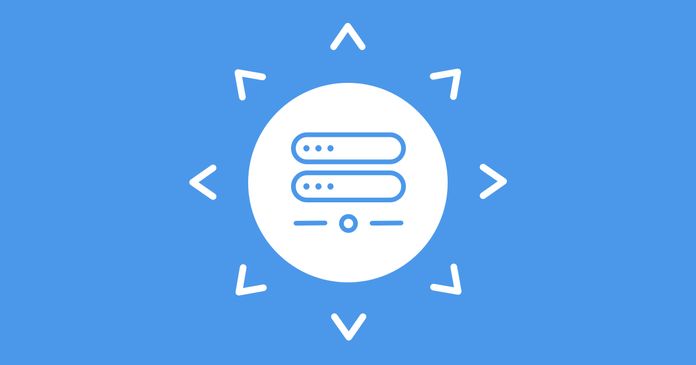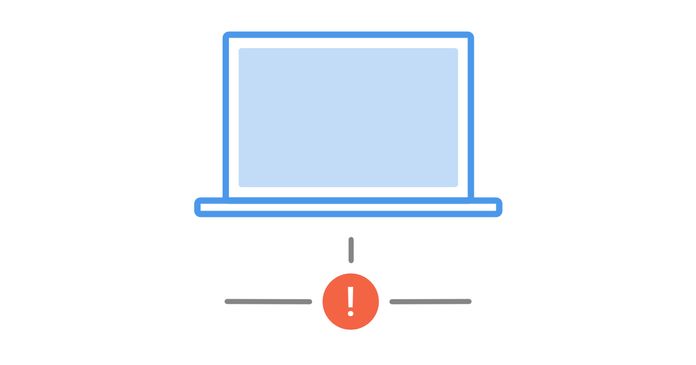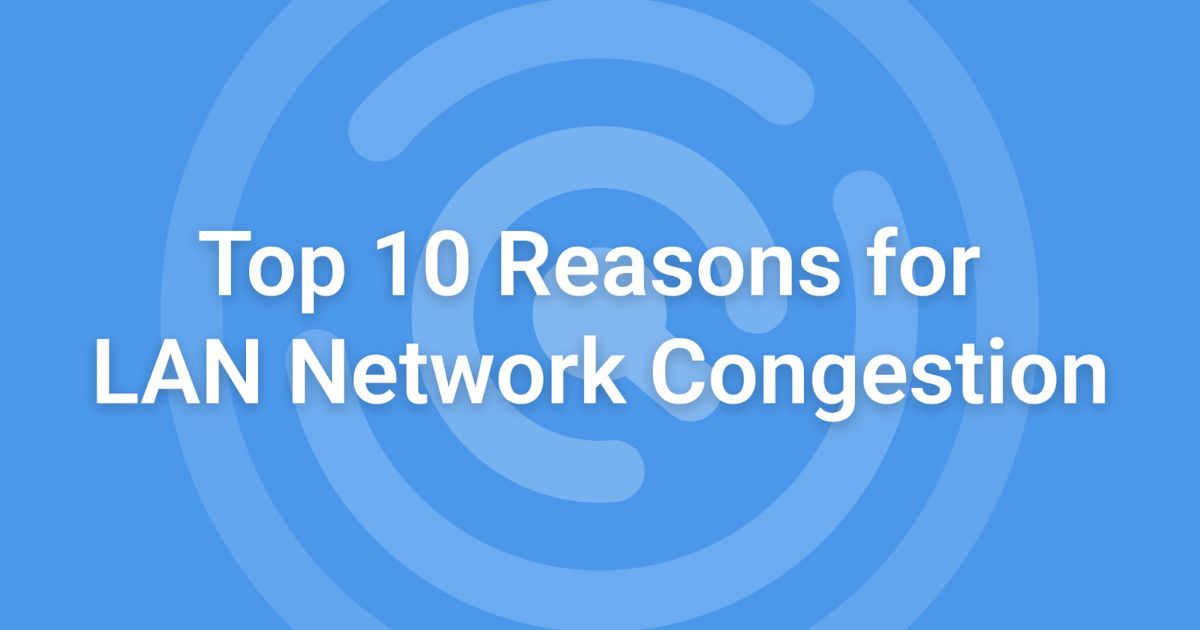Table of Contents
Table of Contents
In the intricate realm of information technology, where the foundations of modern business are securely anchored, the Local Area Network (LAN) is a cornerstone of connectivity. It's the backbone that supports your organization's daily operations, ensuring data flows seamlessly and without interruption.
As seasoned experts in your field, you are well aware of the indispensable role that LAN networks play. But, optimizing and monitoring these networks can sometimes feel like navigating through uncharted waters. In this article, we're going to delve into the intricacies of LAN monitoring, equipping you with the knowledge and tools needed to elevate your LAN network's performance.
So, let's embark on this journey together, as we uncover the techniques and strategies required to master LAN monitoring and supercharge your LAN network's capabilities.
In today's technology landscape, Local Area Networks (LANs) play a vital role as the digital infrastructure that connects organizations, regardless of their size. Before we get into monitoring LAN networks, let’s delve into the importance of LANs and why it's crucial to understand their role.
- Backbone of Connectivity: LANs are the beating heart of an organization's digital infrastructure. They facilitate seamless communication and data exchange among connected devices within a confined geographic area, such as an office building or campus. From computers and printers to servers and IP phones, LANs ensure these devices are interconnected and able to function harmoniously.
- Efficient Data Sharing: Think of LANs as the express lanes for data transfer within your organization. Files, documents, emails, and more are transmitted at lightning speed, ensuring that productivity isn't hampered by sluggish data transfer rates.
- Resource Sharing: LANs enable resource sharing, meaning multiple users can access shared resources like printers, scanners, and network-attached storage (NAS) devices. This not only saves costs but also streamlines workflows.
- Security and Control: LANs provide a controlled environment for data and device access. With proper configuration and security protocols, IT administrators can safeguard sensitive information and grant or restrict access as needed.
- Business Continuity: In the event of a wider network outage or Internet disruption, LANs can continue to function, allowing essential internal operations to proceed uninterrupted. This resilience is vital for businesses that rely heavily on real-time data access.
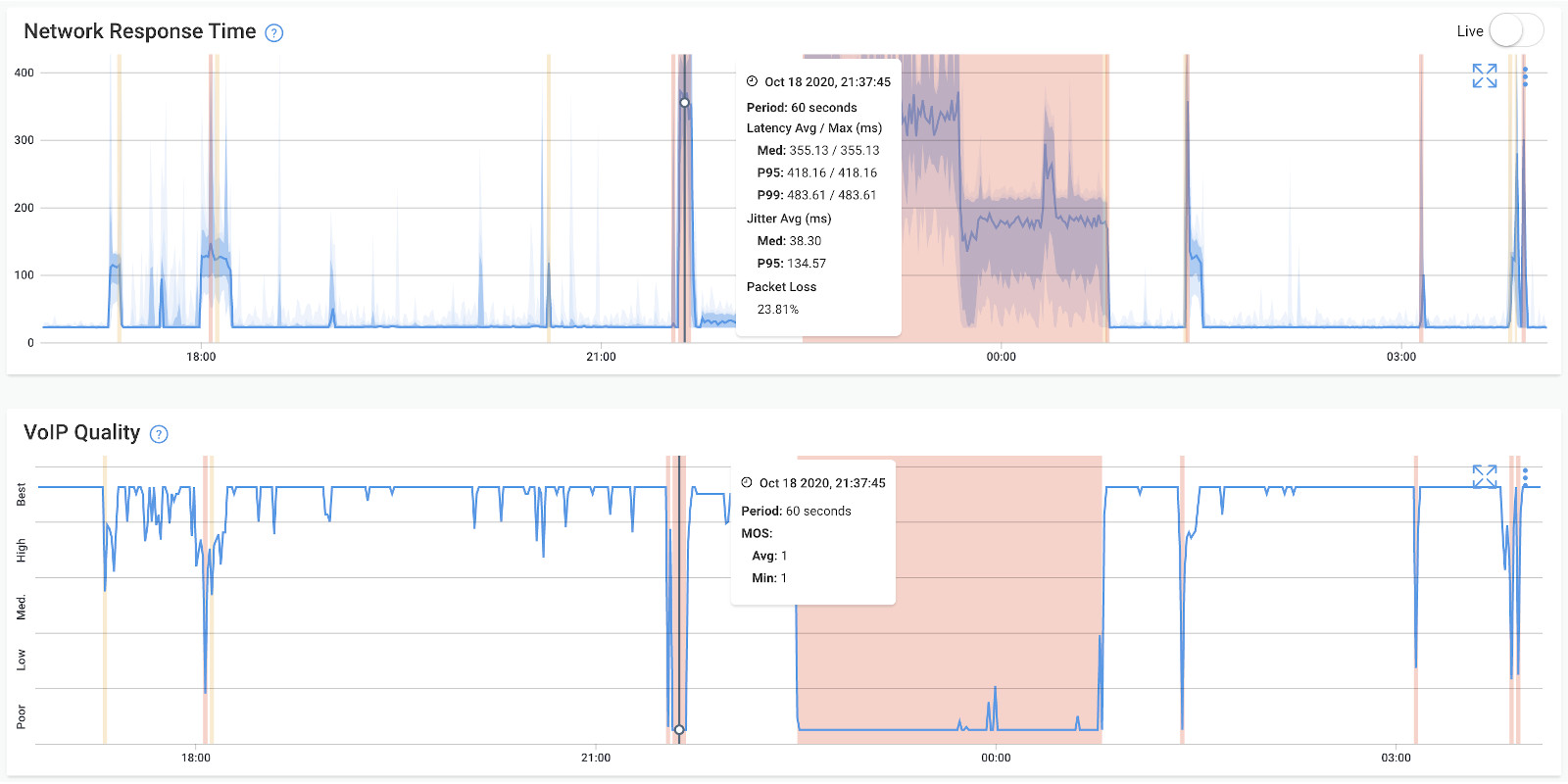

In the world of networking, understanding the distinctions between Local Area Networks (LANs) and Wide Area Networks (WANs) is fundamental. These two network types serve distinct purposes and have varying scopes.
Since we’ll be focusing on LAN monitoring in this article, let’s briefly explore In this section, the key differences between LANs and WANs, to understand the difference between monitoring them both.
- Scope: LANs are designed to connect devices within a limited geographic area, typically within a single building, office, or campus. They are used to establish local connectivity for a specific group of users or devices.
- Ownership: LANs are usually privately owned and operated by an organization, such as a business, school, or home network. They offer control and customization over network configurations.
- Data Transfer: LANs provide high-speed data transfer rates, often in the range of 10 Mbps to 10 Gbps, allowing for fast communication between devices within the network.
- Topologies: LANs can be set up using various network topologies, including Ethernet (wired) and Wi-Fi (wireless). Common LAN devices include computers, printers, servers, and switches.
- Use Cases: LANs are ideal for local resource sharing, such as accessing shared files, printers, and internet connections within a building. They are commonly used in offices, homes, schools, and small to medium-sized businesses.
- Scope: WANs cover a larger geographic area and are designed to connect LANs or networks that are located far apart. WANs can span cities, states, countries, or even continents.
- Ownership: WANs often involve multiple organizations and service providers, and they may be a combination of public and private networks. They require more extensive infrastructure and coordination.
- Data Transfer: WANs typically have lower data transfer rates compared to LANs due to the longer distances involved. Data transfer rates can range from a few Kbps to Gbps, depending on the technology used.
- Topologies: WANs use various technologies for long-distance connectivity, including leased lines, optical fiber, satellite links, and the internet itself. Routers and switches are key components in WAN infrastructure.
- Use Cases: WANs are used for connecting remote offices, branch locations, and data centers, enabling communication and data exchange across vast distances. The internet itself is a global WAN used for worldwide connectivity.
In summary, LANs are local networks used for connecting devices within a limited area, offering high-speed communication and control over the network. WANs, on the other hand, connect LANs or networks over long distances, often involving lower data transfer rates and a more extensive infrastructure. Both LANs and WANs serve critical roles in modern computing and communication, addressing the needs of local and global connectivity, respectively.
Learn how to monitor SD-WAN networks with Network Monitoring to get complete visibility over your SD-WAN service and identify SD-WAN issues.
Learn more

Now that we've established the indispensable role of LANs, let's dive into why monitoring these networks is not just a choice but a necessity for all businesses reliant on high-functioning LAN network performance:
- Proactive Issue Detection: LANs are dynamic, with devices connecting and disconnecting, and traffic patterns fluctuating. Effective LAN monitoring is your early warning system, helping you identify performance issues, bottlenecks, or security breaches before they escalate into critical problems.
- Optimization and Resource Allocation: Monitoring provides insights into network usage trends and resource allocation. With this data, you can optimize your LAN for peak performance, ensuring that mission-critical applications receive the necessary bandwidth.
- Security Threat Mitigation: Cyber threats are ever-evolving, and LANs are potential entry points for malicious actors. Monitoring helps detect suspicious activities, allowing you to take immediate action to protect your network and sensitive data.
- Cost Efficiency: By tracking resource utilization and identifying inefficiencies, LAN monitoring can help reduce unnecessary expenditures on network infrastructure and improve the return on investment.
- Compliance and Reporting: Many industries have regulatory requirements for data security and privacy. LAN monitoring aids in maintaining compliance by providing audit trails and reporting capabilities.
- Enhanced User Experience: LAN monitoring ensures that end-users experience minimal disruption and enjoy optimal network performance. This translates to higher productivity and customer satisfaction.
Now let’s explore the tools and techniques you can employ to become a LAN monitoring maestro, ensuring your LAN network operates at peak performance and security.
In the ever-evolving landscape of network management, having the right tools at your disposal is essential. Enter Obkio, a leading name in Network Performance Monitoring.
Obkio Network Performance Monitoring is a cutting-edge network monitoring solution designed to empower IT professionals, network administrators, and businesses of all sizes with the ability to monitor and optimize their network performance effectively. With a focus on simplicity, reliability, and actionable insights, Obkio stands as a trusted ally in ensuring that your network operates at its peak potential.

Why Choose Obkio?
- Real-Time Visibility: Obkio provides real-time insights into your network's performance, allowing you to detect issues as they happen and take immediate action.
- Proactive Monitoring: Say goodbye to reacting to network problems. Obkio offers proactive network monitoring alerts that keep you informed of network anomalies, so you can address them before they impact your operations.
- User-Friendly Interface: Whether you're an IT veteran or new to network management, Obkio's intuitive interface makes monitoring and troubleshooting accessible to all skill levels.
- Detailed Analytics: Obkio's reporting and analytics tools offer in-depth insights into your network's behaviour, helping you make informed decisions to optimize performance and resource allocation.
- Scalability: Obkio scales with your network. Whether you're managing a small LAN or a complex global WAN, Obkio can adapt to your needs.
Don't leave your network's performance to chance. Obkio is your partner in ensuring that your LAN and WAN networks operate seamlessly, efficiently, and securely.

In the vast realm of network management, effective LAN monitoring is the cornerstone of ensuring your Local Area Network (LAN) runs like a well-oiled machine. This chapter will serve as your initiation into the world of LAN monitoring, covering essential aspects such as:
Before diving into the intricacies, it's crucial to establish a clear definition of LAN monitoring.
LAN monitoring is the process of observing and assessing the performance, health, and security of a Local Area Network. It involves the continuous tracking of various network metrics, such as bandwidth utilization, network utilization, traffic patterns, device connectivity, and security parameters.
LAN monitoring tools and software are employed to collect and analyze data from network devices, allowing administrators to gain insights into network performance and detect anomalies or issues in real-time.
To embark on a successful LAN monitoring journey, it's essential to establish clear network performance objectives. These objectives serve as your guiding principles throughout the monitoring process:
- Define Measurable Goals: Determine what specific aspects of your LAN performance you want to monitor and improve. This could include metrics like latency, bandwidth utilization, or packet loss.
- Align with Business Needs: Ensure that your performance objectives align with your organization's broader goals and objectives. For example, if your business relies heavily on real-time video conferencing, your performance objectives may prioritize low latency and high bandwidth for this application.
- Establish Baselines: Before making improvements, establish network baselines by measuring current network performance. This provides a reference point for evaluating the effectiveness of your monitoring and optimization efforts.
- Monitor Continuously: Network performance objectives are not static; they should evolve with your organization's changing needs and technological advancements. Continuously monitor and adjust your objectives to stay aligned with your business goals.
As you embark on your LAN monitoring journey, keep these fundamental principles in mind. They will serve as the foundation upon which you'll build a robust and effective LAN monitoring strategy to elevate your network's performance and reliability.
Now, let’s get into the real juicy stuff: deploying LAN monitoring!
When it comes to LAN monitoring, having a comprehensive and all-encompassing view of your network is paramount. It's not just about tracking isolated metrics or keeping an eye on specific devices; it's about gaining complete visibility into your network's performance from end to end.
This is where an end-to-end Network Performance Monitoring tool emerges as your most valuable asset.
An end-to-end Network Performance Monitoring tool allows you to monitor every aspect of your LAN network, from the moment data leaves its source to the instant it reaches its destination. This means tracking data packets as they traverse through switches, routers, firewalls, and various network devices. It's like having a virtual set of eyes on every byte of data within your LAN.
Next, you need to choose the right tool for you! We recommend an Active, Synthetic agent-based tool, like Obkio Network Performance Monitoring, to measure end-to-end network performance.
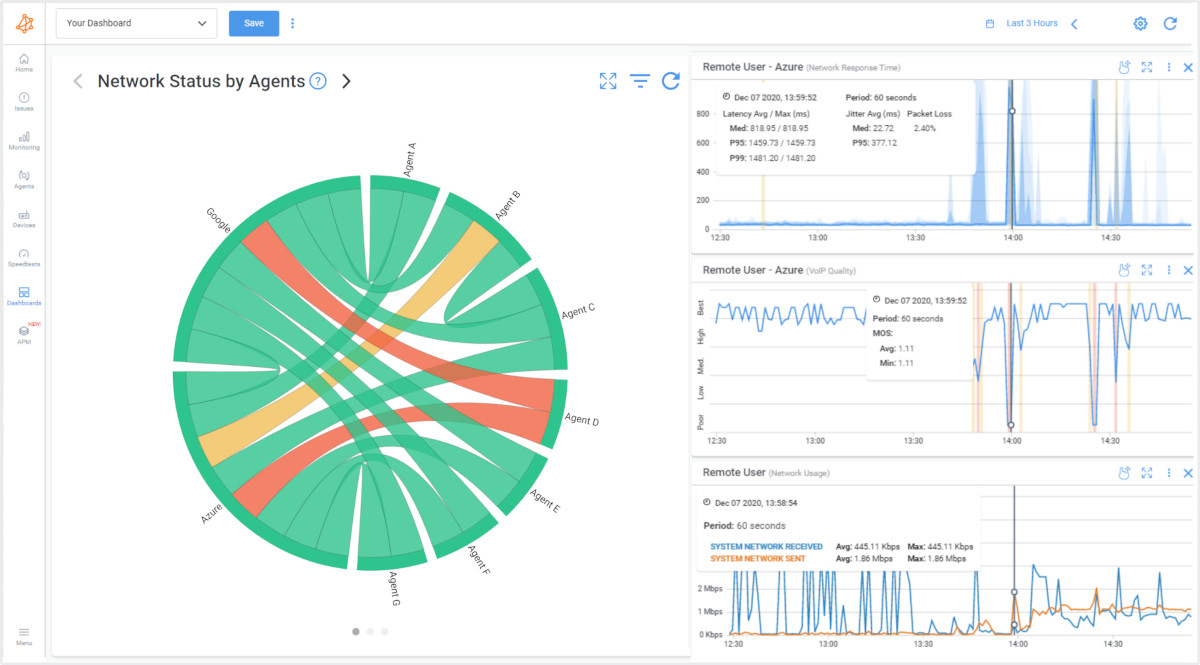
- Obkio is SaaS-based: So it can be deployed in 10 minutes and doesn't require any special configurations. This means that you can start monitoring network performance quickly, and can easily scale the solution to your business needs.
- End-to-End: Obkio measures every end of your network, from your LAN to your WAN, using Network Monitoring Agents. You can deploy Agents in all your branch offices, remote locations, data centers, Clouds and over the Internet. It can also support all network types.
- Synthetic Monitoring: Obkio measures network performance using synthetic UDP traffic, which means there’s no packet capture required and no privacy concerns for users.
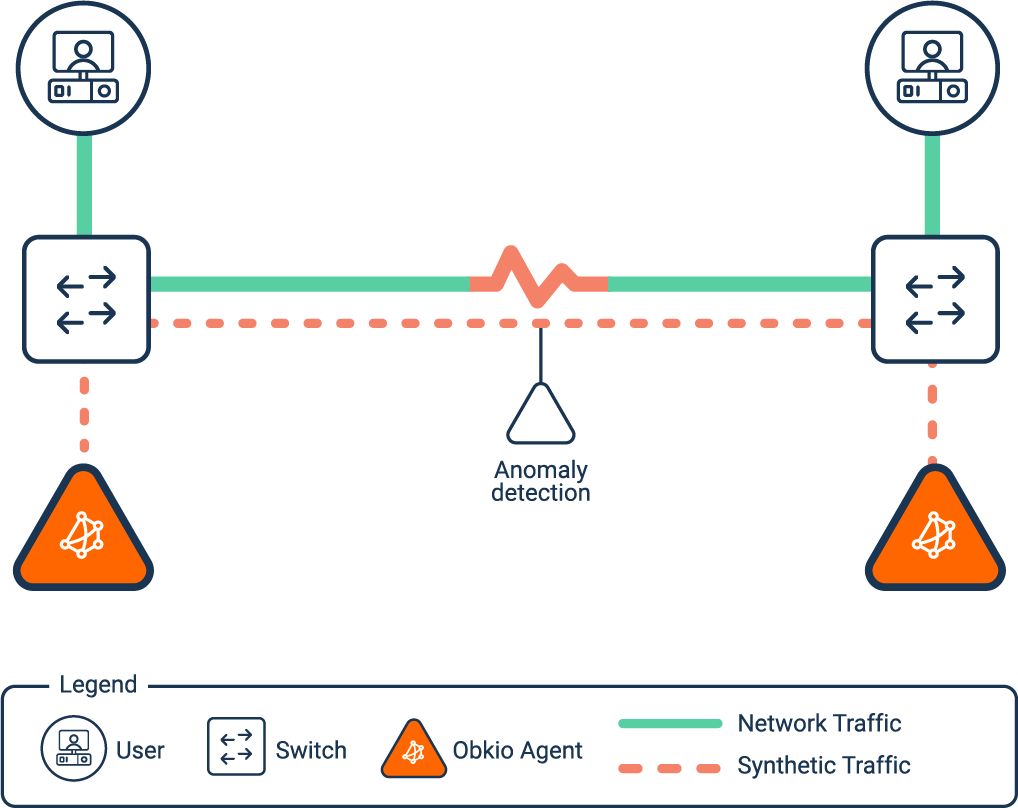
With complete visibility, you can quickly pinpoint the source of network problems, whether it's congestion at a specific switch, excessive latency between devices, or even security breaches within your LAN. This level of insight is indispensable for IT professionals and network administrators striving to maintain optimal LAN performance.

To kickstart your network performance & LAN monitoring journey with Obkio, the first step is to deploy Network Monitoring Agents. These Agents play a vital role as they continuously gauge network performance at crucial network junctures.
They’re deployed in key network locations in your LAN and WAN and continuously exchange synthetic traffic to measure performance.
First, start by deploying Agents in your LAN (Local Area Network):
1. Determine Monitoring Locations:
Identify key points within your LAN where you want to monitor network performance. These locations should be strategically chosen based on factors such as network traffic, critical devices, or areas with known connectivity issues.
2. Select Agent Types:
Depending on your monitoring needs and the specific devices or platforms available in your LAN, choose the appropriate type of monitoring Agent. Some common Agent types include software-based Agents that can run on various operating systems (e.g., Windows, macOS, Linux) or hardware-based Agents specifically designed for network monitoring.
These Agents should be strategically placed in the specific office locations where you're experiencing connectivity challenges. Obkio offers a variety of Agent types, all equipped with the same powerful features. What's more, they are compatible with a range of operating systems, including MacOS, Windows, Linux, and more. This flexibility ensures you can seamlessly integrate them into your network environment.
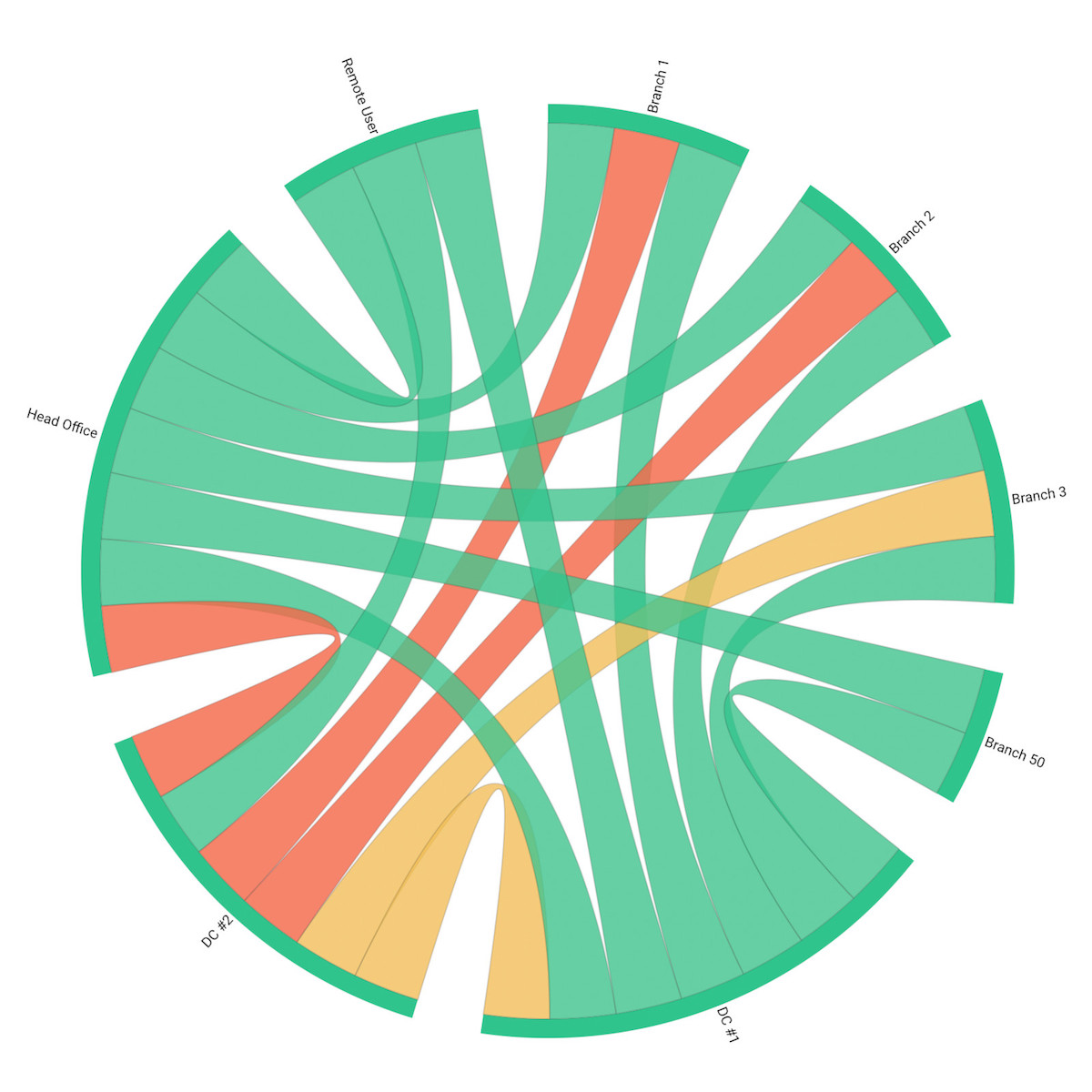
Next in this agent-based network monitoring approach, you’ll need to deploy Monitoring Agents in your WAN as well.
WAN monitoring allows you to track network performance from your organization's premises (LAN) to remote locations, data centers, cloud services, or branch offices. It allows you to pinpoint the source of network connectivity problems, whether they originate within your LAN or occur due to external factors.
More specifically, WAN monitoring helps you detect and diagnose performance problems that may occur beyond your LAN, such as issues with internet service providers (ISPs), cloud service providers, or connections between branch offices. This facilitates faster troubleshooting and problem resolution.
For this you can use:
- Software or Hardware Agents: Deploy these Agents in remote offices, branch offices or data centers.
- Public Monitoring Agents: These are deployed over the Internet and managed by Obkio. They compare performance up to the Internet and quickly identify if network issues are global or specific to one destination. You can use an AWS or Google Cloud Agent.
Finally, you’ll need to begin monitoring your network devices using Obkio’s Network Device Monitoring feature.
Network devices are the backbone of any LAN infrastructure, and monitoring them provides critical insights into the health and performance of your LAN. Monitoring network devices allows you to keep tabs on the status and health of critical components such as switches, routers, firewalls, access points, and servers. This helps you identify hardware failures, overheating issues, or other problems that could disrupt network operations.
1. How to Monitor Network Devices:
Once you’ve installed your monitoring agents, you can then start monitoring your network devices using SNMP by adding the devices inside the Obkio App.
The device must support SNMP. Obkio supports all versions of SNMP (v1, v2c and v3) and of course, read-only access is needed. Learn more about the supported devices here.
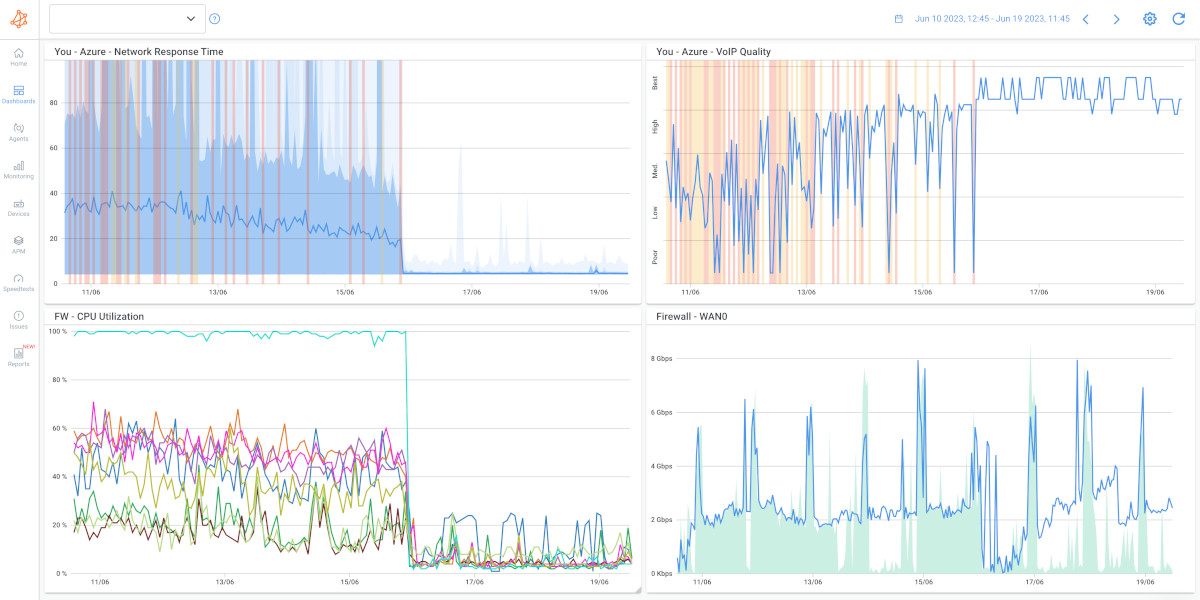
2. Which Network Devices Should You Monitor?
When it comes to LAN monitoring, it's crucial to monitor a range of network devices to ensure the overall health, performance, and security of your network. Here's a list of network devices that you should consider monitoring:
- Switches: Switches are central components of LANs, and monitoring them helps track traffic patterns, identify congestion, and ensure that they are operating correctly.
- Routers: Routers connect different network segments, including LANs and WANs. Monitoring routers helps detect routing issues, traffic congestion, and security threats.
- Firewalls: Firewalls are vital for network security. Monitoring firewalls helps detect and respond to security threats, track rule violations, and ensure proper configuration.
- Access Points (APs): APs are used for wireless LANs (Wi-Fi). Monitoring APs helps assess Wi-Fi signal strength, client connectivity, and potential interference.
- Servers: Monitoring servers is essential to ensure they are available, responsive, and not experiencing resource bottlenecks. This includes both physical and virtual servers.
- Load Balancers: Load balancers distribute network traffic across multiple servers or paths. Monitoring load balancers ensures even distribution and helps identify potential failures.
- Network Attached Storage (NAS) Devices: NAS devices store and manage data. Monitoring them helps ensure data availability and assess storage utilization.
- Printers and Print Servers: Monitoring printers and print servers ensures that printing services remain available and identifies issues like print job queues.
- VoIP Gateways: If your LAN supports Voice over IP (VoIP), monitoring VoIP gateways is crucial to maintain call quality and detect call drops or latency issues.
- Security Cameras and DVR/NVRs: If your LAN includes surveillance cameras, monitoring these devices ensures their functionality and storage capacity.
- Intrusion Detection/Prevention Systems (IDS/IPS): IDS/IPS devices monitor network traffic for security threats. Monitoring them helps detect and respond to potential intrusions.
- Uninterruptible Power Supplies (UPS): Monitoring UPS devices ensures that critical network equipment remains powered during outages and tracks battery health.
- Environmental Sensors: Monitoring environmental conditions (temperature, humidity, etc.) within server rooms or data centers helps prevent equipment overheating or damage.
- Network Printers and Scanners: These devices should be monitored to ensure they are online, available, and not experiencing issues.
- Gateways and Modems: Monitoring these devices is essential if they are part of your network's connectivity to the internet or WAN.
- Network-Attached Devices (IoT): If your LAN includes IoT devices, monitoring them helps ensure their proper functioning and security.
- Managed Network Services: If you use third-party managed services from MSPs or MSSPs, monitoring their performance ensures that you receive the service quality you expect.
- Endpoints (Computers, Workstations): Monitoring individual computers or workstations can help identify performance issues, malware infections, or hardware problems.
- UPS Bypass Switches: These devices should be monitored to ensure that they are functioning correctly and can be used in case of a UPS failure.
- Network Print Servers: If your LAN includes networked printers, monitoring the print servers helps ensure print job processing and printer availability.
- Storage Area Network (SAN) Devices: If your LAN includes SAN devices, monitoring them helps ensure data access, performance, and storage capacity.
The specific devices you should monitor depend on your network's size, complexity, and critical services. Comprehensive LAN monitoring involves monitoring a combination of these devices to maintain network reliability, security, and performance.
After deploying your Network Performance Monitoring tool, Obkio's Monitoring Agents initiate data exchange to assess network metrics such as jitter, packet loss, and latency. These metrics are then presented on Obkio's Network Response Time Graph for network visualization and analysis.
Evaluating these network metrics enables you to promptly recognize and pinpoint any deterioration in network performance, which could serve as an early indicator of impending network problems. Obkio delivers real-time network performance updates every minute, ensuring that you stay informed and are alerted to any issues as they arise. Additionally, you have the capability to review historical performance data, facilitating the troubleshooting of past network issues.


Effective LAN monitoring is about focusing your efforts on the most critical components and areas within your network.
In this section, we'll guide you through identifying and prioritizing the key elements that warrant close monitoring to ensure optimal network performance, security, and reliability. By understanding what matters most, you can streamline your monitoring efforts and make the most of your resources for a resilient and efficient LAN infrastructure. It’ll also help you with your Monitoring Agent setup from the previous section.
1. Core Network Devices:
- Switches: Core switches are central to network traffic routing. Monitoring them ensures efficient data transfer and identifies potential bottlenecks.
- Routers: Routers connect your LAN to other networks. Monitoring routers helps maintain routing efficiency and security.
2. Internet/WAN Connectivity:
- Monitor your LAN's connection to the internet or wide area network (WAN). It ensures that external connectivity is stable and any disruptions are promptly addressed.
3. Server Infrastructure:
- Monitor critical servers, including domain controllers, file servers, email servers, and database servers, to ensure their availability, performance, and resource utilization.
4. Firewalls and Security Appliances:
- Firewalls and security appliances are essential for protecting your LAN from external threats. Monitor them for intrusion attempts, rule violations, and overall security status.
5. Network Traffic and Bandwidth Usage:
- Continuously monitor network traffic to identify patterns, potential congestion, and bandwidth hogs. This helps in optimizing traffic flow.
6. Network Segments and VLANs:
- If you have VLANs (Virtual LANs) or segmented networks, monitor traffic and performance within these segments to ensure proper isolation and performance.
7. Wireless LAN (Wi-Fi):
- Monitor access points (APs), wireless client connectivity, signal strength, and channel interference to maintain a reliable Wi-Fi network.
8. Network Services and Applications:
- Keep an eye on critical network services and applications, such as email, VoIP, video conferencing, and web servers, to ensure uninterrupted service.
9. Security and Intrusion Detection Systems:
- Monitor security systems, including intrusion detection and prevention systems (IDS/IPS), to detect and respond to security threats proactively.
10. Network Health and Device Status:
- Regularly check the health and status of network devices, including switches, routers, and firewalls, to identify hardware failures or misconfigurations.
11. DNS and DHCP Services:
- Monitor DNS (Domain Name System) and DHCP (Dynamic Host Configuration Protocol) services to ensure that hostname resolution and IP address allocation are functioning correctly.
12. Redundancy and Failover Mechanisms:
- Monitor redundancy and network failover configurations to ensure that backup paths or systems are ready to take over in case of device or link failures.
13. Remote Access and VPNs:
- Monitor remote access solutions and VPN (Virtual Private Network) connections for security, availability, and performance.
14. Endpoints and User Devices:
- Keep an eye on individual workstations, laptops, and user devices for performance issues, malware infections, and compliance with security policies.
15. Critical Network Paths:
- Monitor specific network paths that are critical for key applications or services to ensure low latency, minimal packet loss, and high network availability.
16. VoIP Quality of Service (QoS):
- If your LAN supports VoIP, monitor QoS metrics to maintain high call quality and reduce call drops or latency or implement QoS for VoIP.
17. Application Performance:
- Monitor the performance of critical applications to ensure that they are responsive and meeting service level agreements (SLAs).
18. Backups and Data Storage:
- Monitor backup systems and data storage solutions to verify that backups are successful and data is protected.
19. Logs and Event Data:
- Regularly review logs and event data from network devices and servers to detect anomalies, security incidents, and performance issues.
The most important parts to monitor will depend on your organization's specific goals, network architecture, and critical services. It's essential to establish clear monitoring objectives and tailor your monitoring strategy to align with your network's unique requirements and priorities.
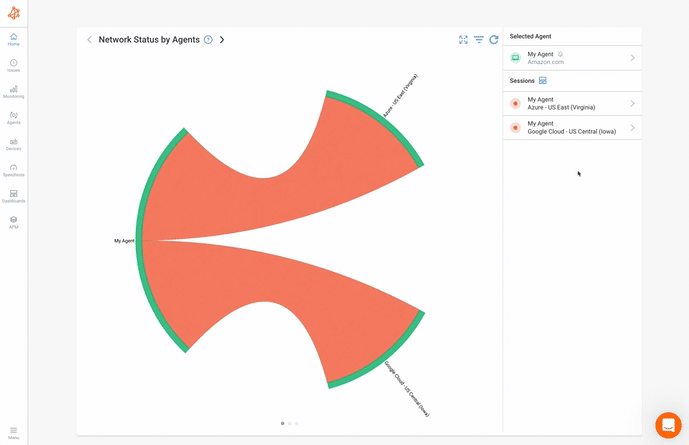

When it comes to networking, your LAN isn’t everything. A true end-to-end monitoring setup is one that monitors network performance from your LAN to your WAN.
Monitoring both your WAN (Wide Area Network) and LAN (Local Area Network) is essential for a holistic approach to network management and ensuring the overall health and performance of your organization's network infrastructure. Here’s why you should consider it:
1. End-to-End Network Visibility:
WAN monitoring allows you to track network performance from your organization's premises (LAN) to remote locations, data centers, cloud services, or branch offices. This end-to-end visibility is essential for understanding the complete network path and identifying potential bottlenecks or issues that may arise anywhere along the route.
2. Identifying Network Degradation:
WAN monitoring helps you detect and diagnose performance problems that may occur beyond your LAN, such as issues with internet service providers (ISPs), cloud service providers, or connections between branch offices. These external factors can have a significant impact on the user experience.
3. Optimizing Cloud and Internet Services:
Many organizations rely on cloud-based services and applications, making WAN monitoring crucial for ensuring the availability and performance of these services. Monitoring your WAN helps you assess the impact of cloud service providers on your network and identify any network connectivity issues or latency issues.
4. Troubleshooting Network Connectivity Problems:
WAN monitoring enables you to pinpoint the source of network connectivity problems, whether they originate within your LAN or occur due to external factors. This facilitates faster troubleshooting and problem resolution.
5. Enhancing User Experience:
A poor WAN connection can lead to slow application response times, video conferencing disruptions, and delays in accessing remote resources. Monitoring your WAN ensures a smooth and consistent user experience, regardless of the location of your users or resources.
6. Capacity Planning:
Monitoring both WAN and LAN traffic helps you make informed decisions regarding bandwidth allocation and network capacity planning. This ensures that you have the necessary resources to support your network's growth and evolving demands.
7. Security and Compliance:
WAN monitoring is essential for detecting and mitigating security threats that may target external network entry points, such as remote access or VPN connections. It also helps organizations maintain compliance with security standards and regulations.
8. Comprehensive Network Analysis:
Combining WAN and LAN monitoring data provides a comprehensive view of your network's performance and health. This integrated approach allows you to correlate data, identify trends, and gain deeper insights into network behaviour.
In summary, monitoring both your WAN and LAN is critical for maintaining a reliable, high-performing, and secure network infrastructure. It enables you to proactively address issues, optimize network performance, and deliver a seamless experience to users, regardless of their location or the services they access.
Learn about distributed network monitoring and how it’s become necessary to monitor decentralized networks like SD-WAN, SASE, and cloud-based (SaaS) applications.
Learn more

In the realm of LAN monitoring, knowledge is power. LAN monitoring is all about measuring vital metrics that serve as the pulse of your LAN's health and performance. By keeping a watchful eye on these key metrics, you gain the insights needed to ensure your LAN operates smoothly, efficiently, and securely.
When you’re using a Network Performance Monitoring tool like Obkio, your NPM tool will automatically monitor all these metrics for you. But it’s still important to understand their role in your LAN network performance.
Imagine bandwidth as the lifeblood of your LAN. It's the fuel that powers data transfer, and its efficient allocation is critical. Monitoring bandwidth utilization provides a real-time view of how much data is flowing through your network at any given moment. This insight is invaluable for:
- Identifying congestion points: High bandwidth utilization at specific times may indicate congestion, allowing you to take preemptive measures.
- Resource allocation: Ensure that critical applications receive the necessary bandwidth for optimal performance.
- Capacity planning: Use historical data to plan for future bandwidth needs and infrastructure upgrades.
Network traffic analysis goes beyond mere volume. It delves into the types of data traversing your LAN, its source and destination, and how it impacts your network's performance. By analyzing network traffic, you can:
- Detect anomalies: Unusual traffic patterns might be a sign of security threats or network issues.
- Optimize routing: Ensure data takes the most efficient path, reducing latency and improving network performance.
- Improve Quality of Service (QoS): Prioritize critical traffic, such as VoIP or video conferencing, to maintain high service quality.
Latency and packet loss are the silent disruptors that can undermine user experience and application performance. Monitoring these metrics is essential for:
- Real-time applications: High latency can lead to delays in real-time applications like video conferencing and online gaming.
- Troubleshooting: Detect and address issues that cause packet loss, which can result in data retransmissions and network inefficiency.
- Ensuring low-latency communication: Maintain responsive communication for critical applications and remote work scenarios.
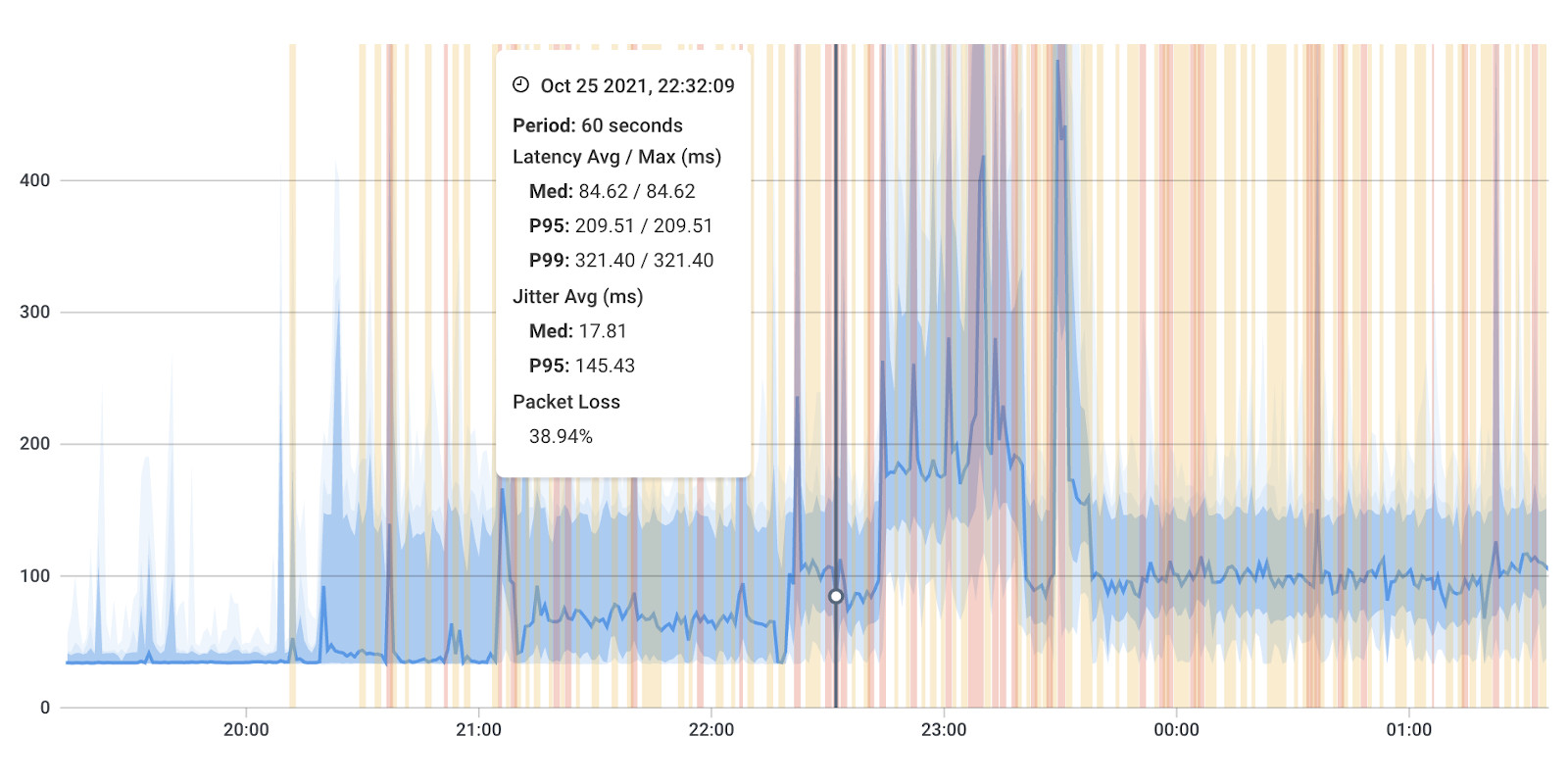
In addition to the key metrics mentioned earlier, there are several other network metrics and parameters that are valuable to monitor for comprehensive LAN monitoring. These metrics provide insights into various aspects of your network's performance, security, and health. Here are some additional network metrics to consider monitoring for LAN monitoring:
- Error Rates: Monitor error rates on network interfaces to identify issues such as collision errors, frame errors, or CRC errors, which can indicate physical or data link layer problems.
- Throughput: Measure the actual data transfer rate to determine how much data is being successfully transmitted over the network. Network throughput is extremely important for optimizing performance.
- Network Utilization by Protocol: Track which network protocols (e.g., TCP, UDP, ICMP) are consuming the most bandwidth to identify traffic patterns and potential security threats.
- DNS Resolution Time: Monitor DNS resolution time to measure the time it takes for DNS requests to resolve domain names to IP addresses, ensuring that DNS services are responsive.
- DHCP Response Time: Track the time it takes for DHCP servers to assign IP addresses to devices on the network, helping optimize IP address allocation.
- Wireless Signal Strength: For Wi-Fi networks, monitor signal strength, signal-to-noise ratio (SNR), and interference levels to ensure optimal wireless connectivity.
- TCP/UDP Port Utilization: Identify which TCP/UDP ports are in use and their associated applications to manage application-specific traffic.
- Virtual LAN (VLAN) Tagging: Monitor VLAN tagging to ensure proper isolation and traffic management within VLANs.
- VoIP Metrics: For VoIP (Voice over IP) networks, track metrics like jitter, MOS (Mean Opinion Score), and call quality to ensure clear and reliable voice communication.
- IPv6 Monitoring: If your network uses IPv6, monitor IPv6 traffic, addresses, and address allocation to ensure IPv6 connectivity and security.
- Device Uptime: Track the uptime of critical network devices to identify devices that frequently experience downtime or instability.
- Resource Utilization: Monitor CPU usage, memory, and disk utilization on network devices and servers to optimize resource allocation and prevent resource bottlenecks.
- Network Latency by Destination: Monitor latency to specific destinations or external services to ensure consistent connectivity and performance for critical services.
- Quality of Service (QoS) Metrics: Track QoS parameters to ensure that high-priority traffic receives the necessary priority and resources.
By focusing on these key metrics, you equip yourself with the insights needed to proactively manage and optimize your LAN. These metrics serve as the vital signs of your LAN's health, allowing you to address issues promptly and ensure a network that thrives in today's demanding digital landscape.
Learn how to measure network performance with key network metrics like throughput, latency, packet loss, jitter, packet reordering and more!
Learn more

Effective LAN monitoring goes beyond measuring metrics; it's about recognizing network problems and bottlenecks that can impact network performance, security, and scalability. So let’s dive deeper into into common LAN network issues, how to spot them, and the telltale signs of subpar LAN performance.
Identifying these anomalies, with the help of tools like Obkio's Network Performance Monitoring tool, is the first step toward proactive resolution and network optimization.
Understanding the common issues that can plague LAN networks is crucial for effective identification and resolution. Some prevalent LAN network issues include:
- Network Congestion: Network congestion or more specifically, LAN congestion, is caused by excessive network traffic leading to slow data transfer and performance degradation. Monitor bandwidth utilization and network traffic. Consistently high traffic levels during peak hours or sudden drops in network performance can signal congestion issues.
- Packet Loss: Packet loss occurs when data packets fail to reach their destination across a network, resulting in retransmissions, increased latency, and decreased throughput. You can use a network monitoring tool to detect packet loss using packet capture or synthetic monitoring.
- Latency: Latency issues cause a delay in data transmission, impacting real-time applications like VoIP or online gaming, leading to poor user experiences. To identify latency issues, measure round-trip time (RTT) between network devices, since high latency is evident in delays between data request and response.
- Jitter: Jitter occurs due to a variability in packet arrival times, causing disruptions in audio and video communications. Use Obkio’s NPM tool to monitor packet arrival times using tools like jitter buffers. Inconsistent inter-packet arrival times indicate jitter or VoIP jitter issues.
- Network Loops: Misconfigurations or faulty cabling leading to broadcast storms and network instability. To identify network loops, observe excessive broadcast traffic or network instability. Spanning Tree Protocol (STP) logs or tools like Wireshark can help detect loops.
- Broadcast/Multicast Storms: Excessive broadcast or multicast traffic flooding the network. Network monitoring tools can detect unusual spikes in broadcast or multicast traffic. Unicast traffic patterns should be typical; any deviation suggests a storm.
- Security Breaches: Unauthorized access, malware, or other security threats compromising network integrity. Monitor security logs and set up intrusion detection systems (IDS) and intrusion prevention systems (IPS) to detect suspicious activities or unauthorized access attempts.
- DNS Issues: DNS issues leading to slow or unreliable domain name resolution affect Internet access and can lead to connectivity problems. Use NPM tools to monitor DNS response times, as consistently long response times or DNS lookup failures indicate DNS issues.
- DHCP Problems: DHCP issues cause IP address conflicts, lease issues, or DHCP server failures that disrupt network connectivity. To identify, and monitor DHCP logs for error messages or examine IP address allocation patterns for conflicts.
- Hardware Failures: Malfunctioning network devices, such as switches or routers, causing downtime. Network monitoring tools provide alerts and status updates for hardware failures or unresponsive devices.
- Configuration Errors: Misconfigured network settings leading to connectivity problems or security vulnerabilities. Regularly audit network configurations to check for errors or inconsistencies.
Identifying LAN network issues requires a proactive approach and a combination of tools, techniques, and vigilance. Tools like Obkio's Network Performance Monitoring tool play a crucial role in this process. Here's how to effectively identify network issues:
- Network Monitoring Tools: Utilize network monitoring tools, such as Obkio's solution, to continuously collect data on network performance, bandwidth utilization, and device status.
- Performance Baselines: Establish performance baselines using Obkio's monitoring data to compare against current network behaviour and detect deviations.
- Alerts and Thresholds: Configure alerts and thresholds within Obkio's tool to receive notifications when specific metrics exceed predefined limits.
- Synthetic Monitoring: Utilize Obkio synthetic monitoring feature to continuously measure network performance using synthetic testing - with no packet capture required. Synthetic monitoring allows you to proactively identify network issues before they affect end users or application performance.
- Log Analysis: Review log files from network devices and servers, supplementing Obkio's data, to identify error messages or security events.
- Regular Audits: Conduct regular network audits using Obkio's tool to check for misconfigurations, security vulnerabilities, and compliance issues.
- End-User Feedback: Solicit feedback from end-users, leveraging Obkio's insights, to identify performance issues and connectivity problems they may encounter.
Learn how to identify network issues by looking at common problems, causes, consequences and solutions.
Learn more

Recognizing the signs of poor LAN performance, with the assistance of Obkio's Network Performance Monitoring tool, is essential for early detection. These signs may include:
- Slow Data Transfer: Sluggish file transfers, downloads, or uploads, as observed and monitored by Obkio's tool.
- Application Lag: Delayed or unresponsive applications, especially in real-time scenarios, tracked through Obkio's monitoring.
- Frequent Disconnects: Devices frequently lose connectivity to the network, as recorded by Obkio's data.
- High Packet Loss: Increased packet loss rates were observed in network monitoring data provided by Obkio.
- Increased Latency: Delays in data transmission, causing noticeable delays in communication, as measured by Obkio's tool.
- Excessive Jitter: Inconsistent audio or video quality during VoIP calls or video conferencing, monitored through Obkio.
- Unexplained Downtime: Unexpected network outages or devices going offline, tracked using Obkio's network performance data.
- Spikes in Bandwidth Utilization: Sudden spikes in bandwidth usage causing congestion, detected through Obkio's monitoring capabilities.
By being vigilant and proactive in monitoring and analyzing your LAN network's behaviour, supplemented by Obkio's Network Performance Monitoring tool, you can swiftly identify anomalies, diagnose issues, and implement necessary remedies to maintain optimal LAN performance and reliability.
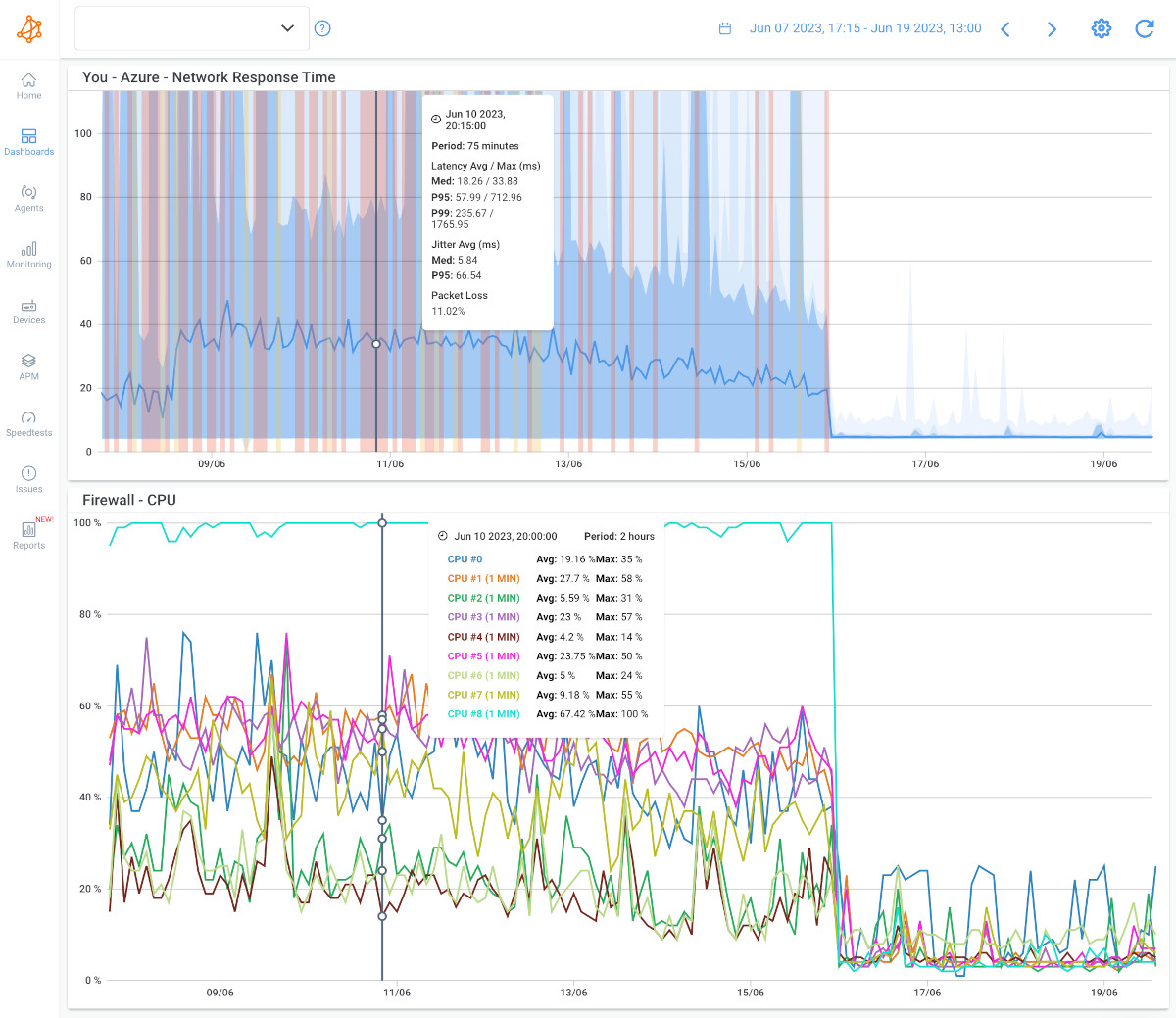

In the world of LAN monitoring, having the right tools at your disposal is essential to navigate the complex web of network performance. We already spoke about using Network Performance Monitoring tools for LAN monitoring, since they’re the most comprehensive type of tool for identifying and troubleshooting LAN performance.
But, there are other techniques and tools. So let’s explore the tools and software necessary to excel in LAN monitoring, as well as helping you make informed decisions when selecting the right monitoring solution for your specific network needs.
When it comes to LAN monitoring, a plethora of tools and software options are available to suit various network environments and objectives. Here are some of the essential tools and software categories you should be familiar with:
- Network Monitoring Software: Comprehensive Network Monitoring tools, like Obkio, provide a range of network monitoring features, including real-time performance data, alerts, and historical analysis.
- Packet Analyzers: Tools such as Wireshark offer deep packet inspection capabilities, allowing you to scrutinize network traffic at a granular level to identify and troubleshoot issues.
- Flow Analyzers: Flow-based monitoring tools like NetFlow or sFlow collectors help you understand traffic patterns, bandwidth utilization, and application usage across your network.
- SNMP (Simple Network Management Protocol): SNMP monitoring tools allow you to collect data from network devices and create a centralized management system to monitor device health, performance, and status.
- Cloud-Based Monitoring Solutions: Cloud-based options like Obkio, which offer ease of deployment and scalability, are gaining popularity for their ability to monitor LANs, WANs, and cloud-based resources.
- Security Information and Event Management (SIEM) Tools: SIEM solutions like Splunk or IBM QRadar can provide both network performance and security monitoring, making them valuable for detecting and mitigating security threats.
Selecting the right LAN monitoring solution for your network is a critical decision that can significantly impact your network's performance, security, and management. Consider the following factors when making your choice:
- Network Size and Complexity: Assess the size and complexity of your LAN. Larger networks with numerous devices and subnets may require more robust and scalable monitoring solutions.
- Budget Constraints: Consider your budget limitations. Some monitoring tools are open-source and cost-effective, while others come with subscription fees. Ensure that the chosen solution aligns with your financial resources.
- Scalability: If your network is expected to grow in the future, choose a monitoring solution that can scale with your needs without major disruptions.
- Ease of Use: Evaluate the user-friendliness of the monitoring tool. A solution that offers an intuitive interface and easy setup can save time and reduce the learning curve for your team.
- Required Features: Identify the specific features and functionalities you need, such as real-time alerts, historical data analysis, or integration with other systems like SIEM or cloud platforms.
- Vendor Reputation and Support: Research the reputation of the monitoring tool vendor and the quality of their customer support services.
By carefully considering these factors and exploring the array of LAN monitoring tools and software available, you can make an informed decision that aligns with your network's unique requirements, ensuring effective monitoring and management.
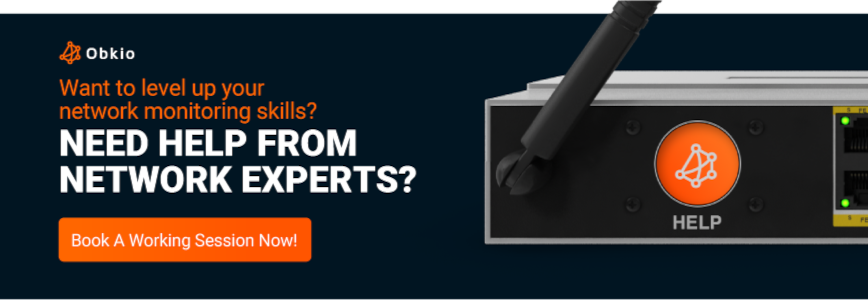
LAN monitoring software is a specialized set of tools and applications designed to oversee and manage a local area network. It provides network administrators with real-time visibility and control over the network infrastructure, devices, and services. This software collects and analyzes data from various network components, allowing administrators to make informed decisions about network performance, security, and resource allocation.
LAN network monitoring software tools offer a range of features to help network administrators ensure that their LAN is running smoothly. Here are some common features of LAN network monitoring software:
Real-time Monitoring: LAN monitoring software provides real-time visibility into network performance. It tracks the status of devices, services, and connections, allowing administrators to detect issues as they occur.
Device Discovery: These tools automatically discover and list all devices connected to the network, including computers, servers, switches, routers, printers, and more. This feature helps in keeping an inventory of network assets.
Performance Metrics: LAN monitoring software gathers and displays performance metrics such as bandwidth usage, CPU and memory utilization, latency, packet loss, and more. This data helps administrators identify performance bottlenecks.
Alerting and Notifications: Administrators can set up customized alerts for specific events or conditions, such as high bandwidth usage, device downtime, or security breaches. Notifications are sent via email, SMS, or other channels to ensure quick responses to issues.
Historical Data Storage: Network monitoring tools often archive data over time, allowing administrators to review historical performance and usage trends. This historical data is valuable for capacity planning and troubleshooting.
Network Mapping: Network topology maps provide a visual representation of the LAN, showing device locations, interconnections, and their status. This helps administrators understand the network's physical layout.
Traffic Analysis: Many LAN monitoring tools offer packet-level analysis to inspect network traffic in detail. This can help identify the source of network congestion, security threats, and performance issues.
Bandwidth Management: Network administrators can monitor and control bandwidth usage, ensuring that critical applications receive the necessary resources and preventing network congestion.
Reporting and Analysis: LAN monitoring tools generate reports and offer data analysis capabilities to help administrators gain insights into network performance and usage trends. These reports are essential for decision-making and compliance.
When selecting LAN network monitoring software, it's important to consider the specific needs of your network, the complexity of your infrastructure, and your budget. Different software solutions offer varying combinations of these features, so choose the one that best aligns with your organization's requirements.
Obkio is a versatile network monitoring software solution that excels in both LAN (Local Area Network) and WAN (Wide Area Network) monitoring. This capability makes Obkio a versatile network monitoring solution that can provide comprehensive visibility into the entire network infrastructure, from external Internet connections down to the local network components.
By monitoring both WAN and LAN performance, Obkio can offer a holistic view of network health and performance, making it valuable for organizations that require end-to-end monitoring to ensure the smooth operation of their network services and applications. This dual functionality can help in diagnosing issues that may arise either within the LAN or due to WAN-related problems, offering a more comprehensive approach to network performance management.
As we approach the conclusion of this article, we've journeyed through the intricacies of LAN network management, exploring strategies to improve performance, enhance security, and identify anomalies. Before letting you off, we'd like to leave you with a final set of tips and insights that can further empower you in your mission to master LAN monitoring and optimization.
Improving LAN (Local Area Network) network performance is essential for ensuring that your organization's internal communication, data transfer, and access to resources remain fast and efficient.
1. Monitor Network Performance:
Implement a robust network monitoring solution to continuously track and analyze network performance metrics. This allows you to identify issues promptly and make data-driven optimizations.
2. Set Up Effective Alerting Systems:
Identify critical network metrics, define clear thresholds, and establish escalation procedures. Prioritize alerts based on severity and automate notifications for fast and effective network troubleshooting.
3. Regularly Update Hardware:
Ensure that network devices such as switches, routers, and access points are up to date. Newer hardware often offers better performance and security features.
4. Optimize Network Design:
Review and optimize your network's physical and logical design to minimize bottlenecks and reduce latency. Consider factors like switch placement, VLANs, and network segmentation.
5. Upgrade Network Switches:
Invest in managed switches that offer Quality of Service (QoS) features to prioritize critical traffic, such as VoIP or video conferencing.
6. Implement VLANs:
Use Virtual LANs (VLANs) to segregate network traffic, improving security and reducing broadcast traffic that can cause congestion.
7. Update Firmware and Software:
Regularly update the firmware and software of network devices and servers to ensure they are patched against security vulnerabilities and perform optimally.
8. Optimize DNS and DHCP:
Ensure efficient domain name resolution (DNS) and IP address assignment (DHCP). Use local caching DNS servers and properly configure DHCP lease times.
9. Traffic Prioritization:
Implement QoS policies to prioritize critical applications and services, ensuring they receive adequate bandwidth and low latency.
10. Optimize Wireless LAN (Wi-Fi):
If using Wi-Fi, optimize access point placement, use 5 GHz frequency bands, and minimize interference sources to enhance wireless performance.
11. Load Balancing:
Implement load balancing solutions to evenly distribute network traffic across multiple paths or servers, reducing congestion and enhancing redundancy.
12. Firewall Optimization:
Configure firewalls to allow necessary traffic while blocking unwanted or malicious data packets, optimizing both security and performance.
13. Content Delivery Network (CDN):
Use CDNs to cache and serve static content closer to end-users, reducing latency and accelerating content delivery.
By implementing these tips and continually monitoring and optimizing your LAN network, you can ensure that it operates at peak performance, providing a reliable and efficient infrastructure for your organization's daily operations.
Confidently navigate the network monitoring tools landscape with our ultimate buyer's guide. Expert insights, use cases, and tips for informed choice
Learn more

LAN monitoring serves as the digital pulse of modern organizations, ensuring that data flows seamlessly, applications run smoothly, and communication remains uninterrupted. Throughout this article, we've delved into the critical role LAN networks play in the technology ecosystem, from connecting devices to enabling mission-critical operations. We've explored the need for effective LAN monitoring to maintain network health, optimize performance, and enhance security.
By understanding the common challenges that LAN networks face, identifying network anomalies, and implementing best practices, you empower your organization to navigate the complexities of modern IT infrastructure with confidence. LAN monitoring isn't just a proactive approach; it's a strategic investment in the reliability and efficiency of your network.
Taking Your LAN Network Performance to the Next Level with Obkio's Network Performance Monitoring Tool
To supercharge your LAN network management, consider integrating Obkio's Network Performance Monitoring tool into your arsenal. This powerful tool offers a comprehensive suite of features designed to provide complete visibility into your LAN network's performance.

- Real-time Monitoring: Obkio provides real-time monitoring of crucial network metrics, including latency, packet loss, and jitter, ensuring you have immediate visibility into network performance.
- Proactive Issue Detection: The tool detects network problems before they impact users, allowing for proactive measures to minimize disruptions, network disconnections and downtime.
- User-Friendly Interface: Obkio offers an intuitive and user-friendly interface that makes it easy for both IT professionals and network administrators to monitor, analyze, and optimize LAN networks.
- Comprehensive Metrics: It measures a wide range of network performance metrics, providing a comprehensive view of your LAN network's health and performance.
- Visualizations: Obkio's Network Response Time Graph provides clear visualizations that make it easy to pinpoint issues and identify performance trends.
- Complete Network Visibility: With Obkio, you gain complete visibility into your LAN network, enabling you to make informed decisions and take necessary actions.
By leveraging Obkio's Network Performance Monitoring tool, you not only gain deeper insights into your LAN network but also equip yourself with the means to elevate network performance, ensure seamless connectivity, and strengthen your organization's technological backbone.
So, take the leap, harness the power of LAN monitoring, and elevate your LAN network to new heights with Obkio. Your organization's digital future depends on it.



























 Obkio Blog
Obkio Blog





